Sewing with Cork
Learn how to prep, cut, stitch, and care for this sustainable textile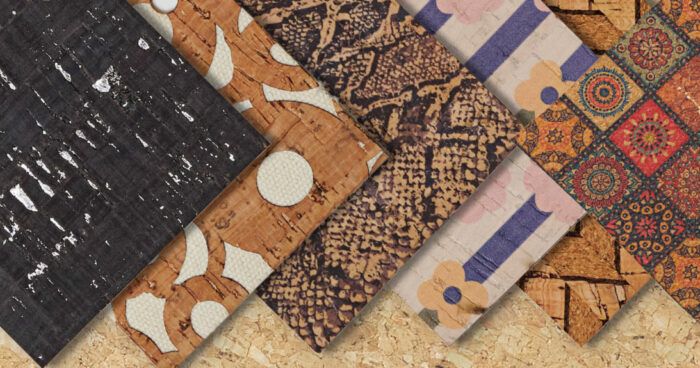
While humans have been harvesting and using cork for more than 5,000 years, cork fabric is new. The main use of cork has traditionally been wine corks. In the 2010s, however, the global wine industry started using synthetic stoppers or screw tops, greatly reducing the demand for natural cork. To keep the industry going, new uses for natural cork were developed—including cork fabric.
This material is waterproof, dustproof, lightweight, stain resistant, greaseproof, antistatic, and antimicrobial. Plus, it has a uniquely patterned surface, and can be dyed and treated in a wide range of ways. Besides these desirable qualities, cork fabric is gaining ground as an eco-friendly leather alternative.
How Cork Fabric is Made
Cork is the bark of a cork oak, grown and harvested in the Mediterranean region for millennia. The trees live 200 to 500 years. Stripping the bark helps prolong a cork tree’s life and allows it to absorb more carbon dioxide. Once harvested, the cork bark layers are air-dried, then boiled to improve elasticity and volume. The layers are pressed flat and dried, then classified by grade for further processing. The grade is based on blemishes inherent in the cork. The smoothest cork gets the highest grade. Cork fabric is made from the top three grades.
To make the fabric, the cork is cut into thin slices; these may be dyed at this stage. Then they are adhered to a fabric backing. Some manufacturers use an eco-friendly glue, and some use the cork’s natural resin.
Surface and backing
There are many prints and colors to choose from, but it’s the textile backing that determines the fabric’s best use. If you can’t see and feel the fabric in person, then you’ll want to know what to look for when ordering online. Some cork fabrics are thin. When you hold them up to a light, you can see through all the gaps in the cork layer. These fabrics are stiff and board-like, almost like paper. I wouldn’t want this in a garment, but they would work as a bag or accessory that requires body.
A few of the samples I looked at were stretchy in one direction. Some backings were plain woven, other backings had a brushed surface. These have a layer of polyurethane between the backing and the cork, which gives the cork a further smoothness while adding durability and structure to the fabric. This interlayer also gives the fabric a leathery hand, which is why it is sometimes called cork leather.
The key to using a cork fabric successfully in a garment is to make sure that it can be laundered. Test a swatch by putting it through a delicate cycle in your washer with cold water. After the first wash, some cork fabrics separate from their backing completely, some separate a little, but I found that the materials sold by Sallie Tomato (SallieTomato.com) withstood more than six or seven washings to date. Those are the ones that work most successfully in a garment.
The fabric is firm but pliable and has the structure of fabric with a fusible interfacing, as in a shirt collar or waistband. That makes it perfect to use in garment areas or other projects that would normally require interfacing.
Although cork fabric may not be your first choice for an entire garment, I have found that it is easy to pair with a lot of textiles. You may need to adjust construction methods to accommodate the material’s thickness, so plan ahead for different seam allowances and/or edge treatments.
Preparation and Cutting
Testing: If you intend to wash the project, test-wash a swatch to determine if the backing holds and whether there is any shrinkage. Also rub the cork against a white paper towel to see if the dye transfers. If it does, consider whether this will affect the way you can use the material.
Garment fitting: Verify the pattern’s fit with a muslin. The cork fabric can withstand limited ripping out and resewing of seams, but it’s better to avoid this.
Layout: The cork’s grain is determined by the surface design, whether visible striations or printed patterns. Lay out a pattern to make the most of them. If the fabric has a slight stretch, place the pattern to take best advantage of that.
Folds: If the garment has a folded area, such as a collar or lapel, fold the cork lengthwise, crosswise, and on the bias to see which direction has the fold or roll you prefer.
Cutting: Hold the pattern in place with pattern weights, or trace around the pattern on the cork’s wrong side. Use a rotary cutter; with scissors, take long cuts to keep the edges smooth.
Sewing and Pressing
Machine needles: A size 80/12 universal needle works well. It is sturdy enough to go through a couple layers of the cork, but small enough that the needle holes will disappear with steam.
Stitch length: Use 3.0 mm or 3.5 mm to attach to lightweight fabrics,
4.0 or 4.5 to attach to
itself or heavy fabrics.
Thread: Standard all-purpose thread works well.
Presser foot: A standard zigzag presser foot is fine. Some retailers recommend a Teflon or rolling foot. Experiment to see what works on the cork fabric you have.
Fabric clips: Try Wonder Clips (Clover-USA.com) or magnets (SewTites.com) rather than pins to attach seams in preparation for stitching. Pins may mar or distort the surface.
Seam allowances: For any edges that will be sewn to another fabric, reduce the seam allowance to 1⁄4 inch, or even 1⁄8 inch.
Pressing techniques: Attach an iron shoe or use a press cloth. Set the iron on the wool or cotton setting, with steam. Test first: The cork won’t burn, but you don’t want to mar a print or surface color.
Interfacing: You’re unlikely to need interfacing. If you want to strengthen the fabric for a heavy-duty project such as a tote bag, use a sturdy lining rather than fusing the cork. Otherwise, use cork in areas that might need interfacing, such as collars.
Edge treatments: Edges can be turned under and stitched, but the result is stiff. You can leave the edges raw, but the backing fabric may fray. I recommend binding the edges.
Maintenance
As described, it’s possible to machine-launder some cork fabrics. If you don’t want to wash a project, you can surface-clean it with a damp cloth or diluted soapy solution.
Cork conditioner (LafloreParis.com) can keep the material looking new longer. It prevents it from drying out and freshens the appearance. Apply the conditioning lotion with your hands or a soft cloth. I also found that conditioning the cork before washing it seemed to preserve the cork layer.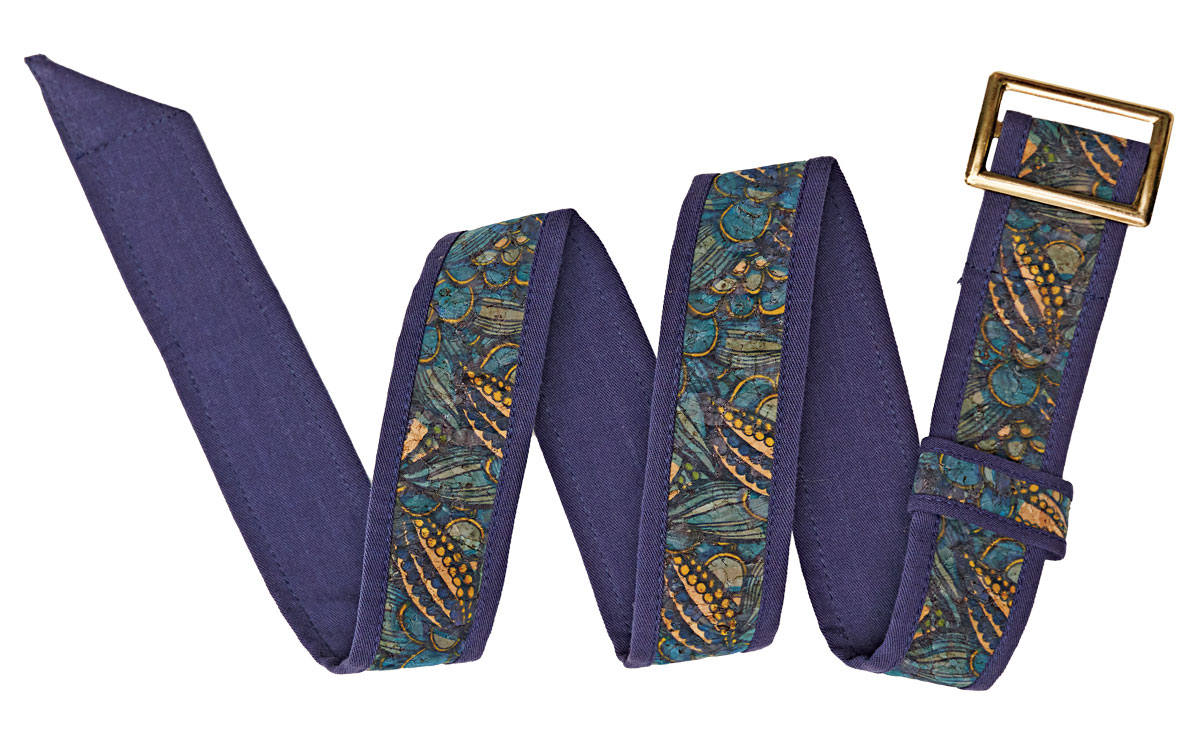
Sources
Cork fabric can be expensive—about $20 to $60 per yard—and I recently ordered some online to see what’s available.
On Etsy and Amazon, cork fabric options include precut craft sizes, generally in 8-by-12-inch rectangles. Etsy also has a lot of yardage. Note that the fabric may be narrow, from 18 inches to 36 inches wide. For large pattern pieces, you may need to anticipate piecing.
Only some retailers sell swatches. And some specify whether they ship the cork rolled or folded; this may make a difference if you are concerned with creases.
I’ve tested products from these sources:
SallieTomato.com: Solids and a wide range of prints in various widths and backing types. These materials were the most durable through washing and are easy to work with. This brand is also sold in retail quilt shops.
SunKissMelbourne.com: This shop has a reasonable variety, but some of the products are stiff and thin, and didn’t hold up to machine washing. I suggest reserving these for bags or other accessories, such as the belt shown above.
Other retailers sell solids and prints, usually in precut pieces:
EmmalineBags.com
FabricFunHouse.com
MyHandMadeSpace.com
MissouriQuiltCo.com
SewManyCreationsNY.com
SewSweetness.com
WeaverLeatherSupply.com
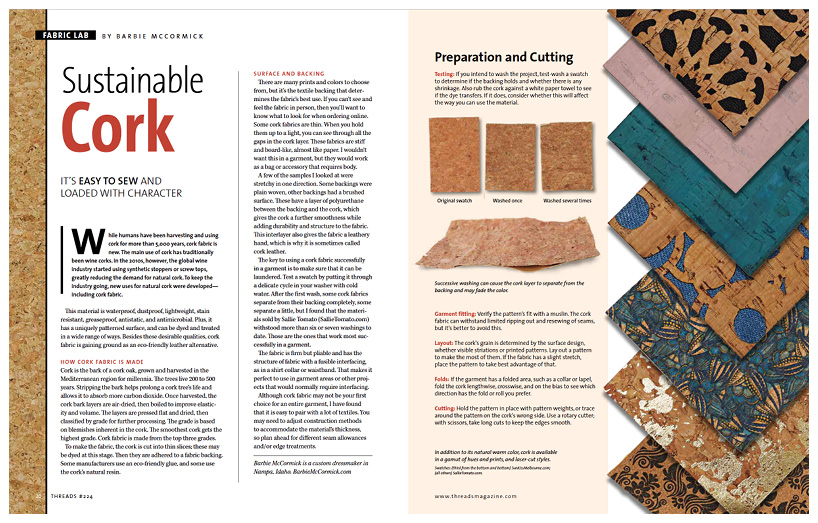 Barbie McCormick is a custom dressmaker in Nampa, Idaho. BarbieMcCormick.com
Barbie McCormick is a custom dressmaker in Nampa, Idaho. BarbieMcCormick.com
Photos: Mike Yamin
For more photos and details, click on the “View PDF” button below.
Threads Magazine #224
View PDF

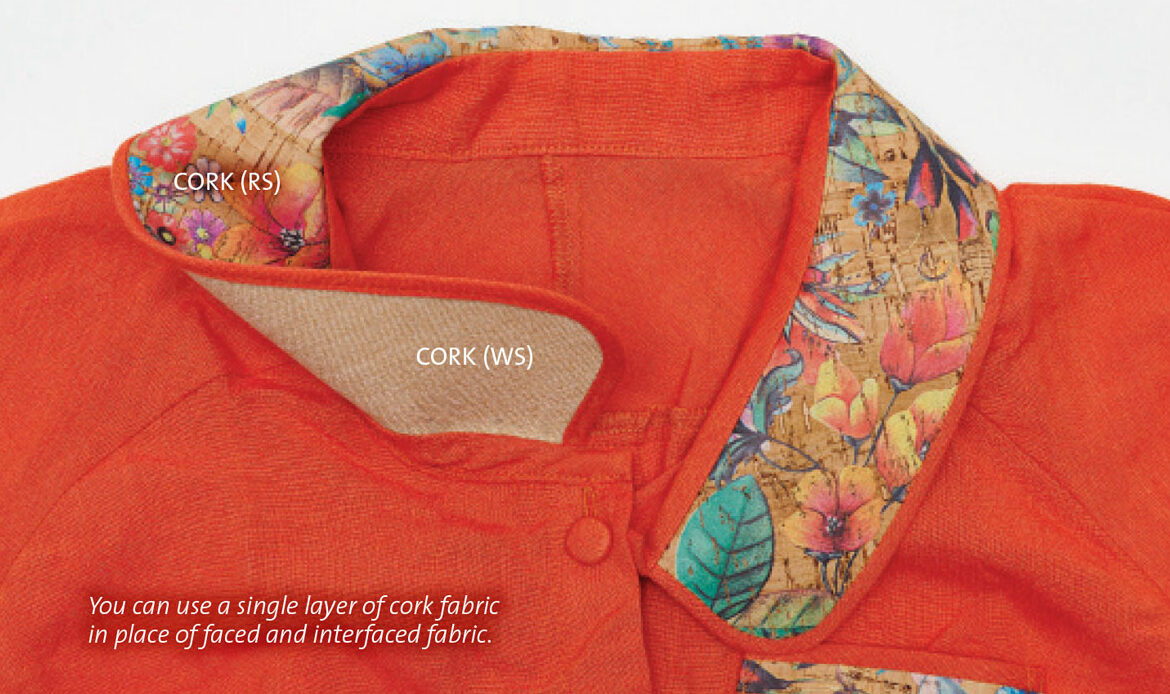
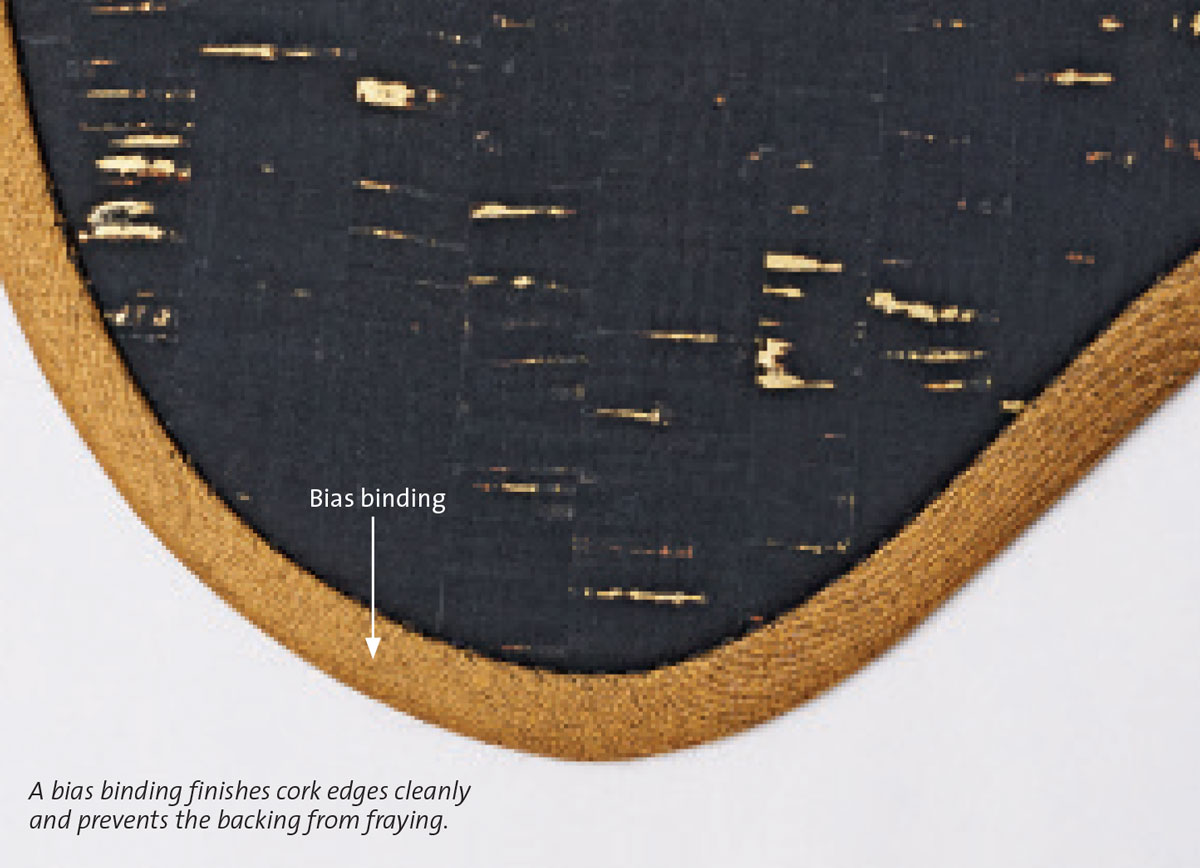






























Log in or create an account to post a comment.
Sign up Log in